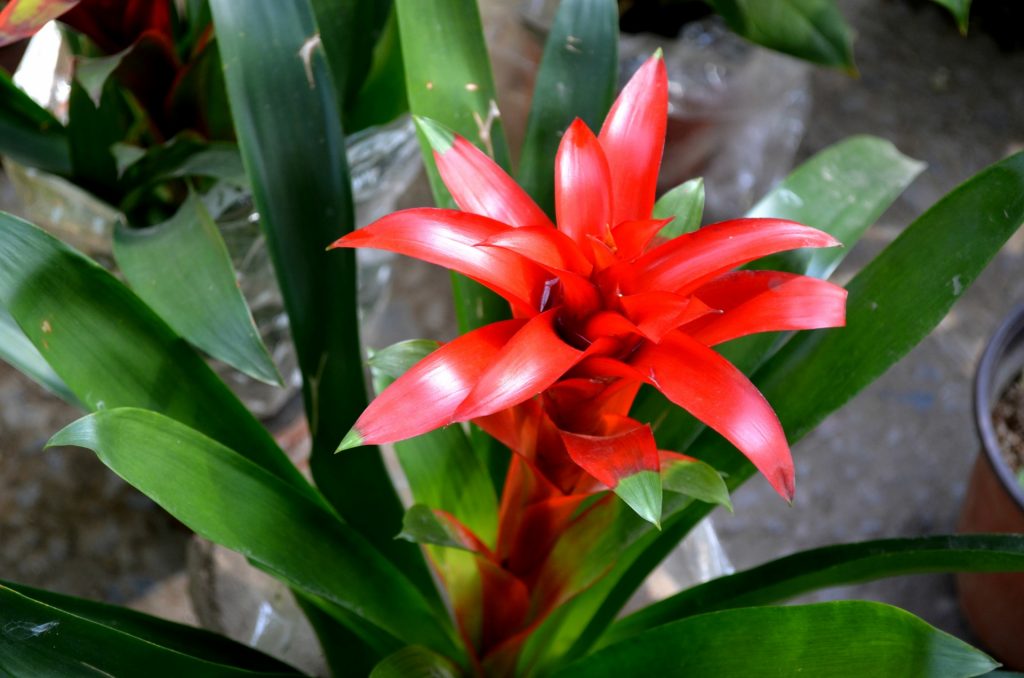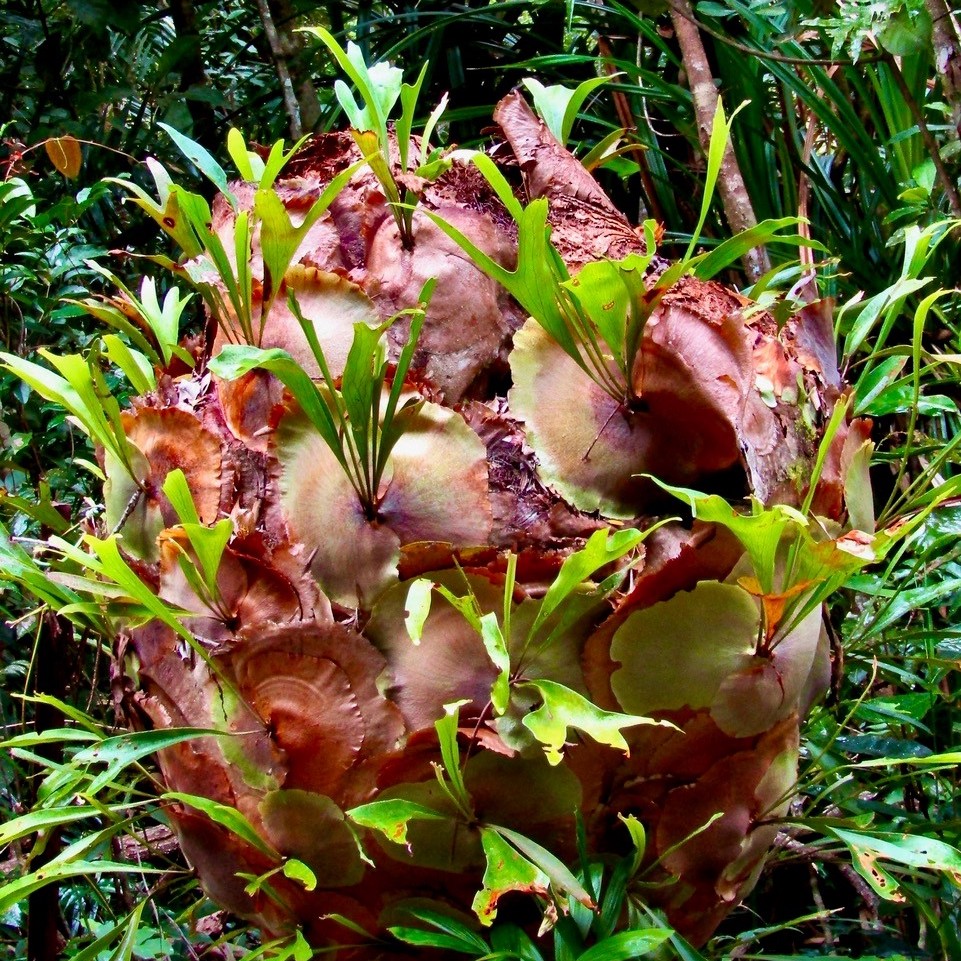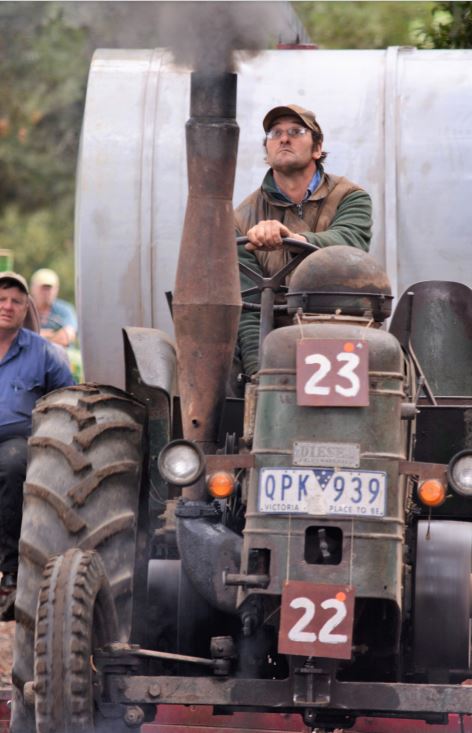June 29th, 2020Up in the air with epiphytes – a whole new world of gardening
Last week’s column featured orchids, particularly those that are epiphytic, a title covering a broad spectrum of plant life in rainforests especially but totally in tropical climes.
Epihpytes are those plants whose roots are literally “up in the air”. They are often mistakenly called parasites, but parasites actually feed from their host plant, whereas epiphytes merely use the host plant as a support, living from the decayed leaves and other organic matter, including their own, that collects in forks of branches and hollows in the trunks of their hosts.
Apart from orchids there are many native epiphytic species, most of which are easily grown and provide an attractive addition to porches, pergolas and shaded areas of the garden. These include ferns – the most notable being stag and elk ferns, bromeliads and quite a few succulents.
The best host for these plants would obviously be a large spreading evergreen tree but it is possible to create artificial homes for them. Stag ferns and similar plants can be encouraged to wrap themselves to a trunk by securing a tightly-packed mass of decaying leaves, peat moss and even shredded newspaper onto it with a sheet of chicken wire. The same technique can be used to create a “nest” in the crook of branches for planting other plants. If no suitable tree is available for a stag fern, a great substitute is to tie strips of bark from the paperbark tea tree (melaleuca alternifolia) or some similar organic material to a slab of hardwood, which can then be hung up against a shaded wall or fence. After several seasons the roots will have penetrated the bark and attached themselves to the wood.
Naturally hanging baskets filled with the same organic materials would suit the orchids, bromeliads etc.
The ultimate air plant
The ultimate epiphyte, a select tribe of the bromeliad clan, almost totally self- sufficient providing it has access to moist air or an occasional dripping tap, is the hundreds of species of “air plant” – tillandsia. In their native Central and South American environments they grow in clusters on the actual branches of trees. What could be called roots are only there to help cling on. Any nourishment (water) comes from the air from humidity or rainfall.
I’m sure you’ve seen these quaint little critters, usually displayed at the checkout counter of chain stores and novelty shops attached to bits of decorated wood or attached to a backing as a brooch. They certainly can be mistaken for plastic ornaments.
With literally hundreds of different species, choice is almost endless, whether it be in colour, shape of foliage or form and colour of flowers.
They are actually the ultimate hybrid, plant/ornament, whether placed in an ornamental glass bowl as part of a display of coloured stones or shells, woven into an ornamental wreath or garland, or attached to a piece of driftwood.
Needing only a weekly mist spray of water, or in hot, dry weather to be submerged for a few moments in water then placed face down on a towel to dry off, they are also the ultimate house plant.
Tillandsias are readily available from specialist gift shops, garden centres and, plant-stocking hardware stores and specialist nurseries.
Got a gardening question? Ask Glen. Email glenzgarden@gmail.com
Images:
Image 1 – A tropical bromeliad

Image 2 – platycerium bifurcatum (stag fern) – one of the many spectacular denizens of Queensland’s Daintree Forest











